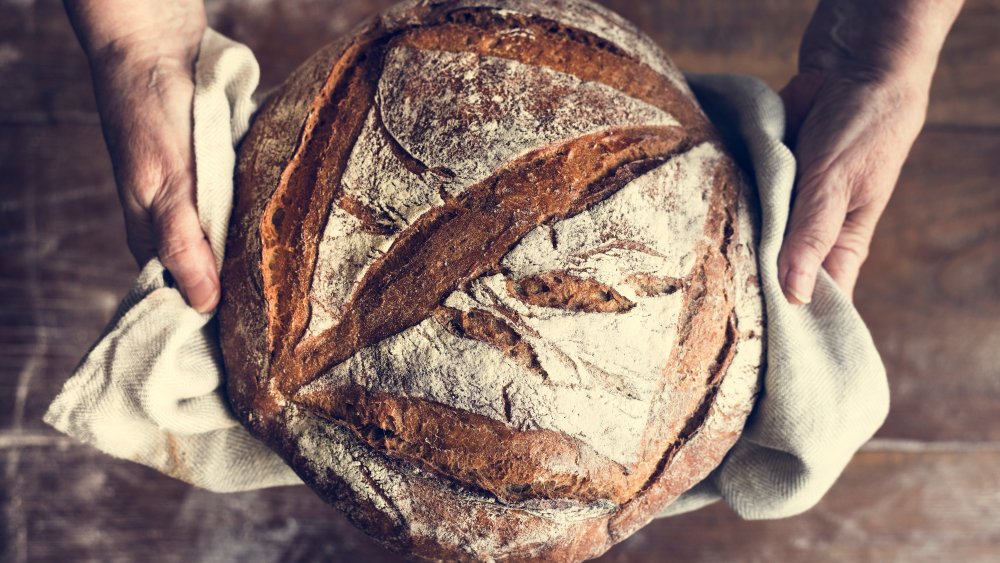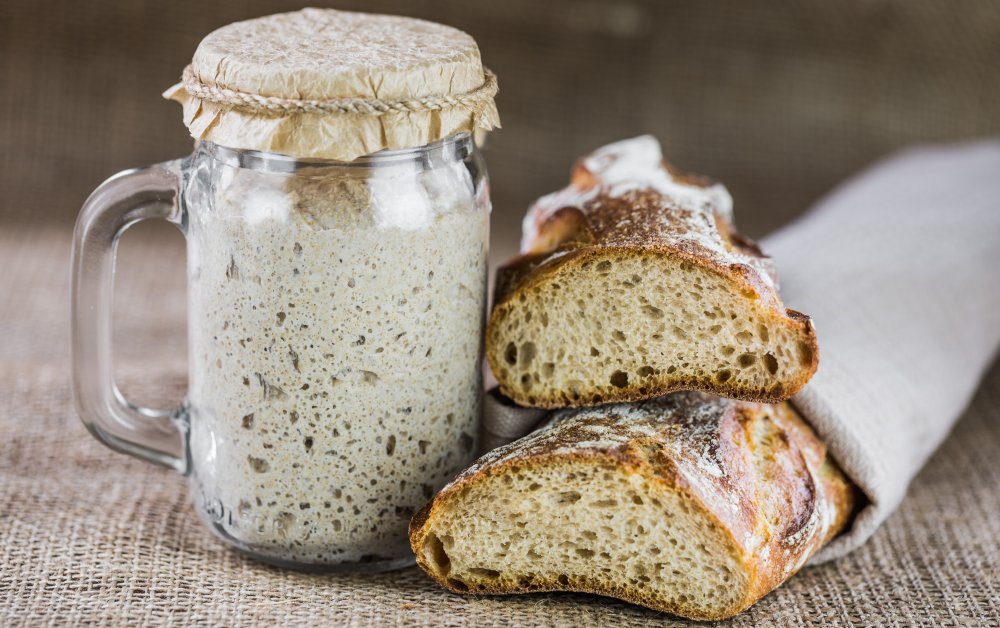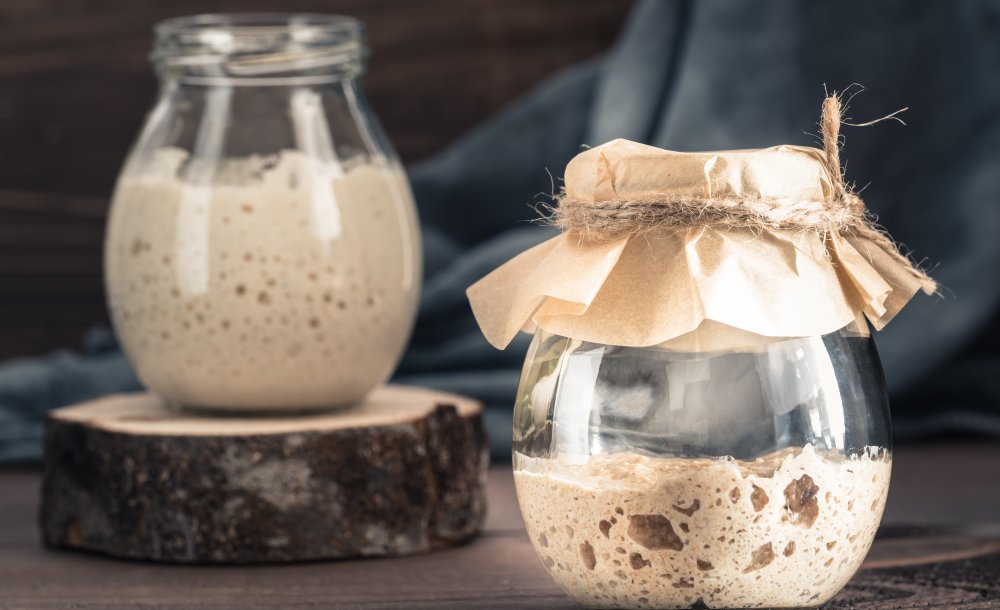Here's How You Should Be Storing Your Sourdough Starter
We see sourdough everywhere: Facebook groups littered with rustic bread photos, a barrage of creative sourdough recipes, and even recipes for starter discard (the part that usually gets tossed out). Why sourdough? Why not baguettes, or bagels, or biscuits?
Perhaps it's the fact that sourdough requires commitment. It's not a one-time thing. For absolute beginners, sourdough is made through a starter. The starter is simply a mix of flour and water, and over time, you (the diligent and skilled baker) continue "feeding" the starter with more flour. This creates a combination of yeast and bacteria, and the fermentation leads to a wonderfully complex — and almost sour — flavor. If you've tried injera, the spongy, Ethiopian flatbread, then you've experienced another magical instance of fermentation in bread (via Chef Marcus Samuelsson).
Bakers have managed to preserve sourdough starters for years, and even decades. It's become such a tradition in some families that a few years back, The New York Times cleverly declared it "America's Rising Pet." But before reaching that level of sourdough commitment, what's the best way to store it?
Before deciding on sourdough starter storage, be honest with yourself
How often will you feed your sourdough starter? It's an important question. If you envision yourself checking in on your starter every single day — the way an attentive gardener checks on their plants — it's best to keep the starter in your kitchen, at room temperature, where you'll (hopefully) remember to feed it twice a day (via King Arthur Flour).
If that seems difficult, there's another option. Pastry chef Claire Saffitz points out that storing sourdough starter in the refrigerator is also an option. The coolness of the fridge will delay the fermentation process, so in this case, feeding the starter only needs to happen once a week (via Bon Appétit).
Those aren't the only two options, though. You could try experimenting. Some condone leaving sourdough starter out and feeding it just once a day, rather than twice — or, even more frequently than twice a day (via The Perfect Loaf). The folks over at America's Test Kitchen tried leaving the starter out for five hours a day before moving it into the refrigerator. They found that this combination of room temp and cold storage allowed them to feed the starter just once a week (via The Splendid Table).
Sealing and storing your sourdough starter
While sourdough starters are a world of science and complexity, one thing bakers shouldn't worry too much about is the container. While the temperature and surroundings of a starter are crucial to its outcome, the sourdough starter does not need to be sealed in an airtight container. It's still helpful to cover the starter with some sort of a lid, to prevent any mess from ensuing (via The Perfect Loaf).
The sourdough starter is about attentiveness which means storing the starter in a clear vessel, like a glass jar or plastic container. Observing the sourdough starter allows bakers to monitor progress. If the starter seems off — maybe it's gotten watery, or perhaps it's drying out — bakers can spot the problem and nurture the starter accordingly (via King Arthur Flour). Plus, observing your starter adds to the fun, as it's difficult to watch those oozy bubbles and not feel a little hit of childlike excitement.


